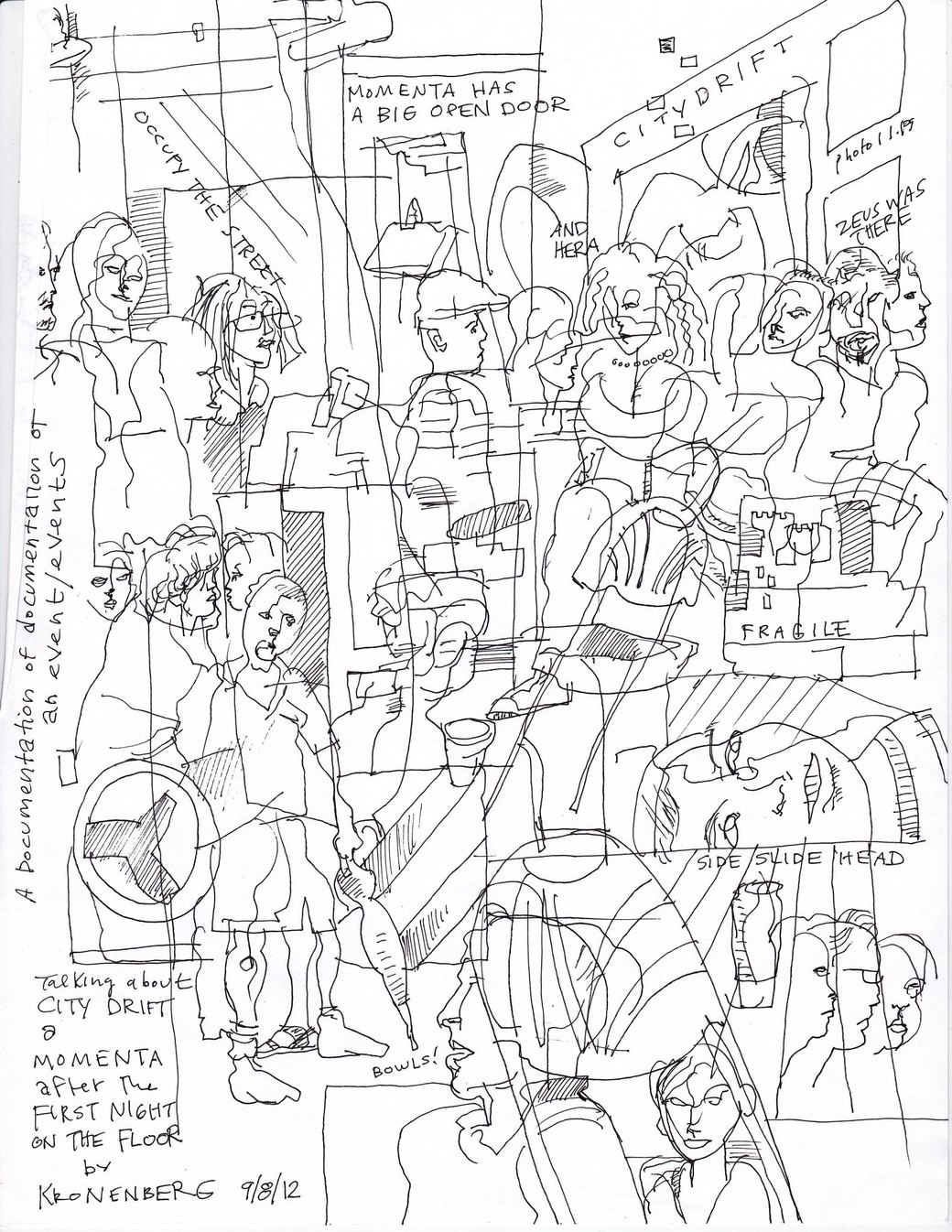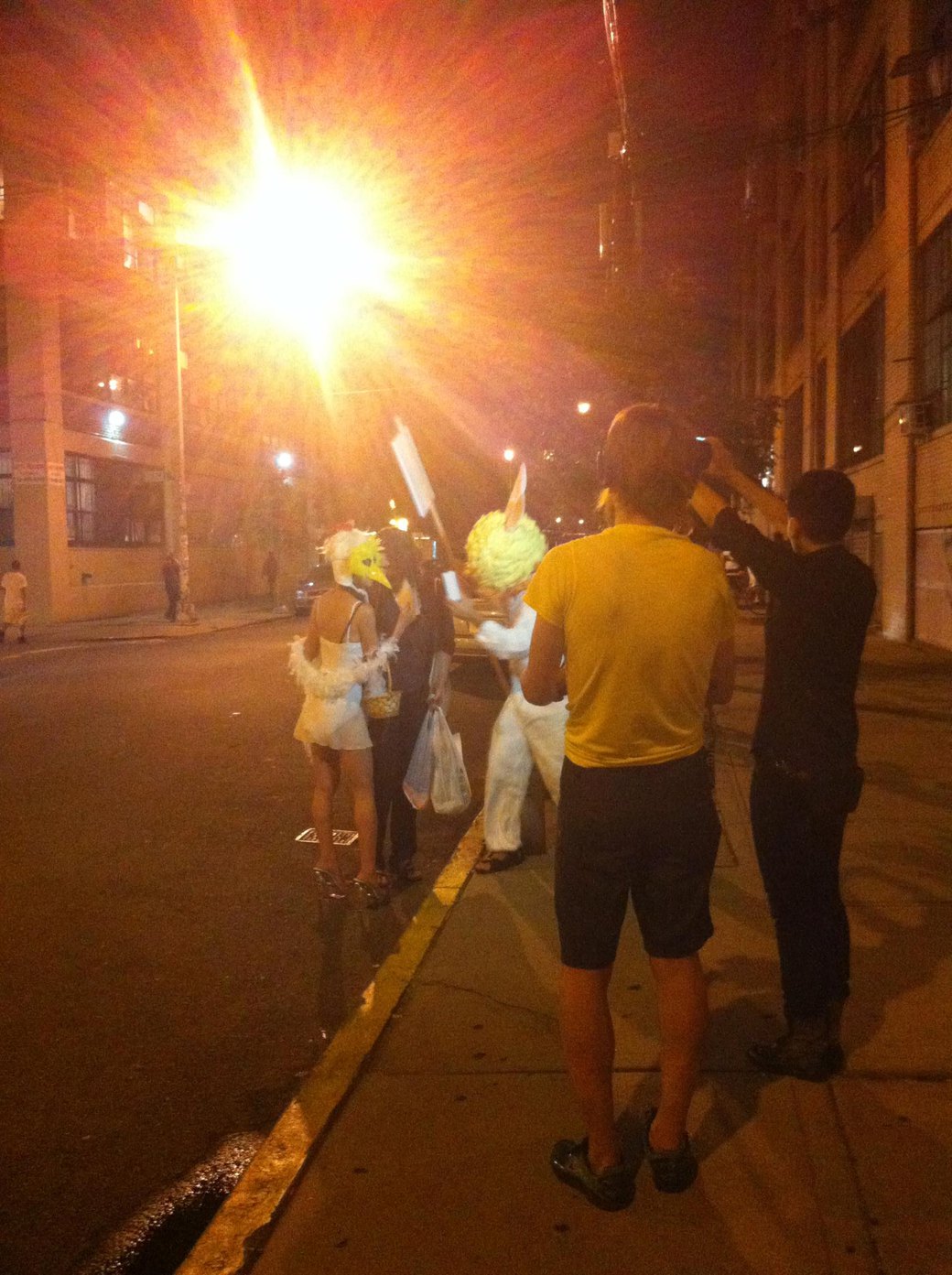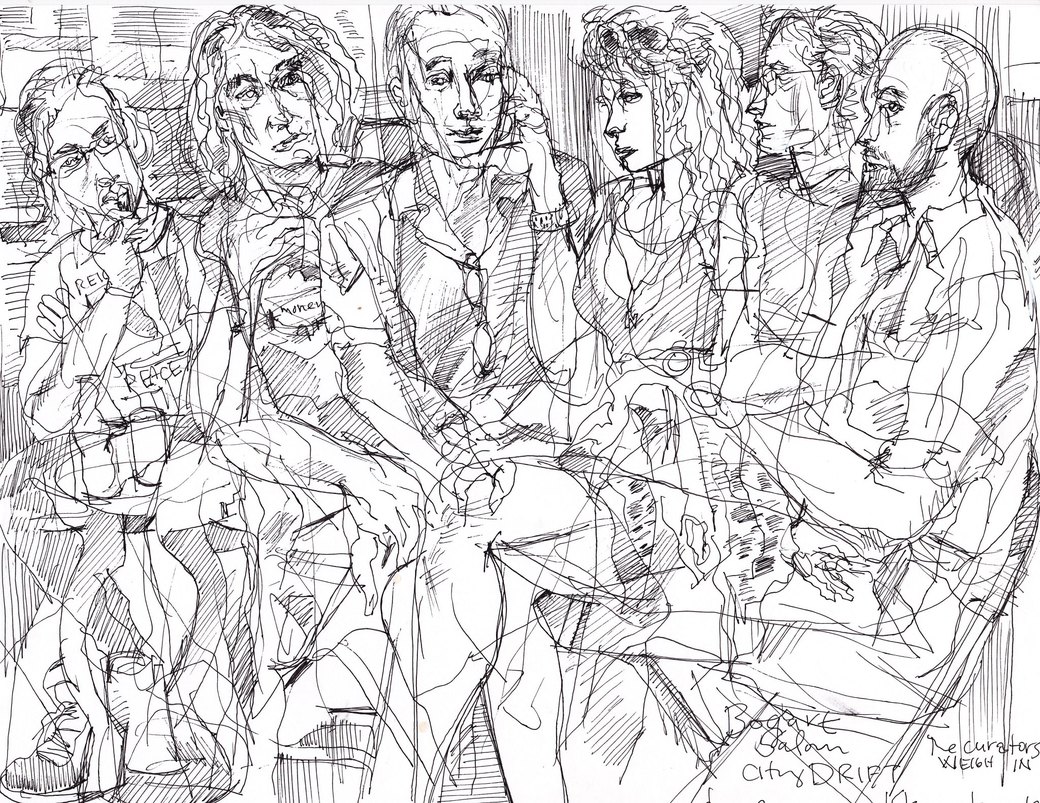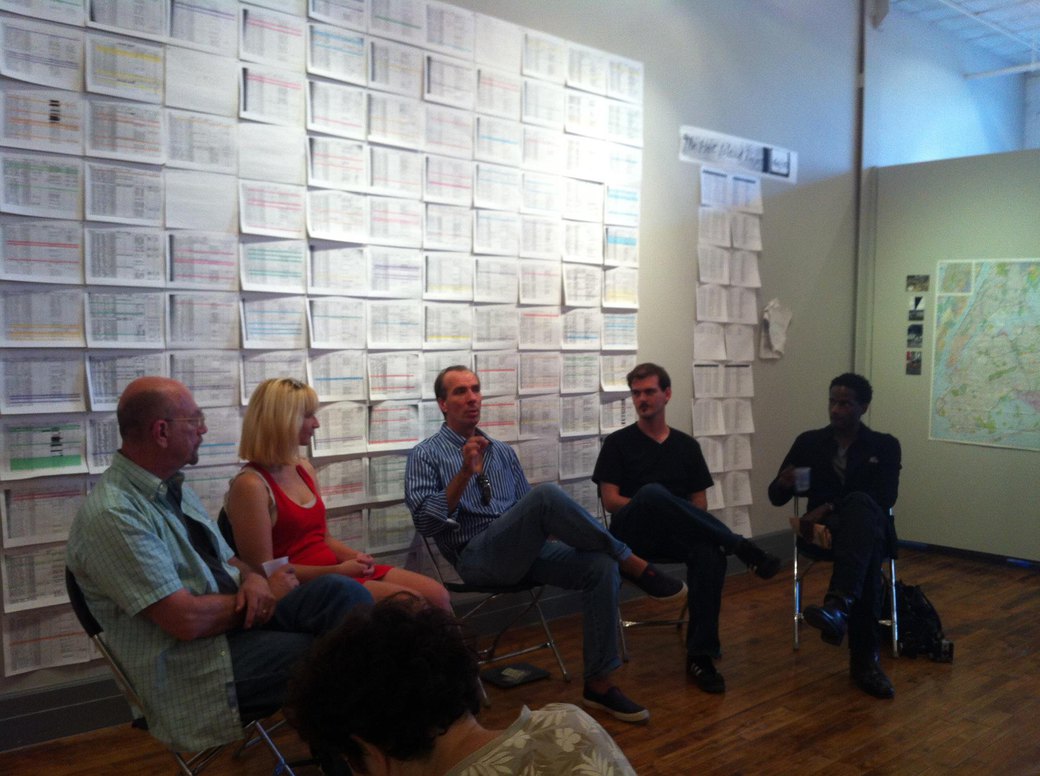Two ideas were organically integrated into nearly every discussion during the citydrift panel discussions over the weekend.
1. Art galleries in this neighborhood are artist enablers.
2. People involved in this scene, veterans of older ones, and even casual observers are keenly aware of the assumed narrative of what happens as artists move into neighborhoods.
To the first point, there were over three hours of artist panels on Saturday to kick it off. Artists who participated in citydrift each gave presentations in Momenta Art.

Who is who? What is real?
The poets who hashtagged their tweets #bklyndrift spoke about the oddity of gaining followers as the night progressed, hashtags themselves, and about Tweeting to someone who was within reach of you. There seemed to be a self-consciousness that first enveloped and then dissipated as the night wore on.
It was an interesting discussion that also touched on gender, as at least one poet created a fake twitter account for a different gendered person and ended the night with more followers on that account than her “real” account. This may have been one of the more meta-drifts of the meta-event that was citydrift.
Embracing your greatest fear
Michael Kronenberg and I sat on our yoga mats and discussed the Trust Fall Art Project. A year-plus long project in which he and I will stay in a different artist’s studio/home or an art gallery every night for a year. We began our project during citydrift in Momenta Art.
Essentially he talked about embracing one of the greatest fears an individual can have. The one we’ve identified as being most poignant is losing your home. For the project we are depending on the kindness of strangers to provide shelter in an energetic exchange that requires blurring our comfort zones to the point of nonexistence.
Mike spoke at length about how we had created a little box in our art gallery and we grew so comfortable that we missed many of the amazing things happening around us. He surmised by explaining that we are taking our yoga mats to everyone else’s little boxes and reporting on what’s happening there.
You can pay with your body

For her drift, performance artist Kikoku Tanaka dressed as a chicken and gave out eggs and chicken on skewers. She was followed by two other costumed performers who pushed people into taking the egg and taking care of it. This was a fun drift to run into. The posse corralled me right outside the 56 Bogart building, we discussed a great many things including the plight of artists and picking up every penny you find on the sidewalk.
She discussed how people reacted to the offer of an egg and food. Upon taking the egg you then “owed her.” The debt could be paid with money or with your body. Many people attempted to give the egg back after being told they were in her debt. It seems that the option of paying with your body was either a red herring or not taken seriously.
I gave 26 cents in the form of a quarter and a penny from the sidewalk.
Curators, Gallerists, and Writers Panels
These panels ended up being an eclectic navel gazing festival. Peter Hopkins was one of the panelists who kept them interesting. A man on the curators’ and gallerists’ panels sighed audibly and bantered, verging on insulting, fellow panelists. It was reminiscent of Jack Kerouac on William F. Buckley’s show in 1968 (Warning: it’s 22 minutes long).
There were a lot of repetitious questions that went something like, “Yeah, but what are you doing for the community?”

As someone remarked, art people go to art galleries.
I’m going to ask this question: Short of grabbing people by the arm and forcing them to look at art that they may or may not want to see, what can you really do for your community?
By asking that, I open the can of worms on display during these discussions. Which was a very defensive posturing that provided the opportunity to tell people what you did personally to engage “the community.” Definitions of “the community” are slippery and no one can give a concise answer.
I have a cognitive dissonance regarding this phenomenon. Which is “Good for you. Really. I don’t care.”
Don’t tell me what you did. Do it and let your actions speak for themselves. If you do the right thing, then it will be known by consistency only.

Final Thoughts
I think that citydrift was the perfect idea. A decentralized “letting go” of ego, prejudice, preconception, fear, and pretension. I only wish that the community will do so with full confidence in themselves going forward. That’s not finger wagging, that is a sincere hope.



